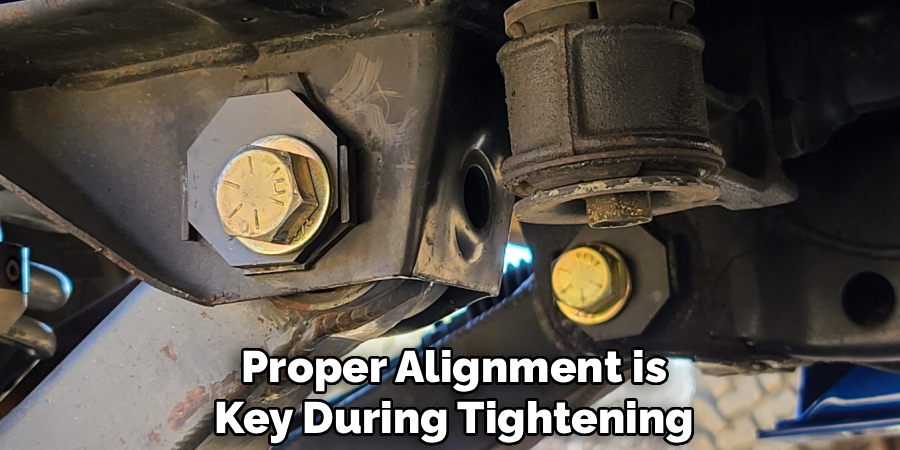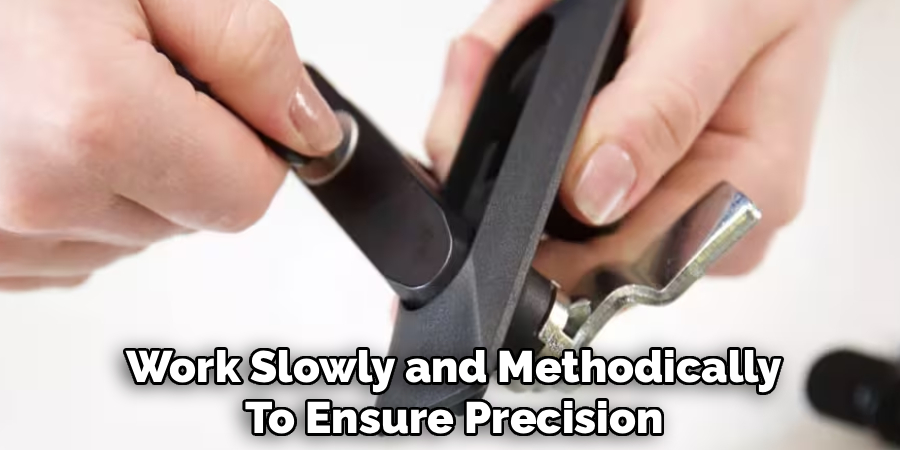Learning how to tighten cam locks is essential for anyone working with flat-pack furniture or modular assemblies. Cam locks are small but crucial components used to connect pieces securely, ensuring that your furniture stays sturdy and aligned. Despite their simple design, improper installation or wear over time can cause them to loosen, leading to wobbly connections and potential damage.

To tighten a cam lock effectively, start by identifying the loose cam. Once located, use a screwdriver or the appropriate tool to turn the cam in the direction indicated, usually clockwise. Avoid over-tightening, as this can strip the threads or damage the furniture. If the cam lock is damaged or worn, consider replacing it with a new one to restore the integrity of the connection. Regularly checking and maintaining cam locks can prevent future issues and prolong the longevity of your furniture.
Thankfully, tightening cam locks is a straightforward process, even for beginners. With just a few basic tools and a little patience, you can restore the stability of your furniture or assembly. This guide will walk you through everything you need to know—why it matters, how to do it, and tips for maintaining security long-term. Whether you’re assembling a cabinet or fixing a bookshelf, understanding cam locks will make your DIY projects more reliable and durable.
Why Is Knowing How to Tighten Cam Locks Important?
Cam locks play a vital role in securing furniture pieces or other modular constructions. Commonly used in flat-pack furniture and shelving units, they rely on a rotating mechanism to lock a cam bolt into place, creating a strong and stable joint. Over time, regular use or improper assembly can cause these locks to loosen, jeopardizing the entire structure’s stability.
If left unaddressed, loose cam locks can cause wobbling, misaligned parts, or even structural failure. This is particularly concerning for furniture that bears weight, such as wardrobes, desks, or cabinets. Knowing how to tighten cam locks allows you to resolve these issues promptly, extending the lifespan of your furniture and maintaining its functionality.
Additionally, mastering this skill saves time and money by enabling you to perform quick fixes yourself without requiring professional help. Whether you’re tightening locks during the initial assembly or as part of regular maintenance, the process ensures a secure connection and keeps your furniture looking and performing at its best.
Step-by-Step Guide: How to Tighten Cam Locks
Step 1: Identify Loose Cam Locks
The first step in tackling any cam lock issue is to locate the affected area. Carefully inspect your furniture for signs of looseness or instability. Pay attention to areas where panels or joints appear to shift or separate when pressure is applied. This often indicates a loose cam lock.

Run your hand along the structure and wiggle potential trouble spots lightly. If you hear a rattling noise or notice movement, it’s likely that the cam lock in that area requires tightening. Once you’ve identified the loose locks, make a note of their position to streamline your repair process. Identifying the problem accurately ensures a focused and efficient approach.
Step 2: Gather Required Tools
Before working on your cam locks, gather the tools needed for the job. You’ll typically need a flathead or Phillips screwdriver, depending on the cam lock design. For more intricate assemblies, an Allen wrench or specialized adjustment tool might be required.
Ensure your tools are in good condition, as worn or stripped screwdrivers can damage the cam locks during tightening. If your furniture manufacturer provides assembly instructions, consult them to confirm the correct tools and avoid unnecessary errors. Having everything prepared helps you work smoothly and efficiently without interruptions.
Step 3: Access the Cam Locks
Once your tools are ready, locate the specific cam locks that need attention. Accessing the locks may sometimes involve moving or lifting panels to expose the mechanism fully. Be mindful of the structure’s stability during this step to avoid accidents or further damage.
Carefully handle the panels to prevent scratching or bending the material. If your furniture has multiple layers, disassemble them methodically to gain clear access to the cam locks. Ensuring proper visibility and accessibility will make the tightening process easier and help you achieve precise results.
Step 4: Align the Cam Bolt and Lock
Cam locks work by gripping a cam bolt securely, so proper alignment is key during tightening. Check whether the bolt is positioned correctly within the cam lock. Misaligned bolts make it difficult for the mechanism to tighten firmly, reducing the connection’s overall strength.

If necessary, adjust the bolt’s position manually. Rotate it gently to ensure it engages with the cam lock grooves properly. Confirm alignment by testing the fit with light pressure. Accurate positioning is essential for a secure and long-lasting connection.
Step 5: Tighten the Cam Lock
Using the appropriate tool, turn the cam lock in the direction indicated by the manufacturer (usually clockwise) to tighten it. Apply steady, even pressure to avoid stripping the grooves inside the cam lock. As the lock turns, you’ll feel resistance as it pulls the bolt securely into place.
Work slowly and methodically to ensure precision. Over-tightening can damage the lock or surrounding material, so stop when you achieve a firm, secure fit. If you’re working on multiple locks, tighten each one individually to maintain balance and stability. This step is where your efforts bring the structure back into alignment and security.
Step 6: Test the Stability
After tightening the lock, test the stability of the furniture piece. Apply light pressure or weight near the repaired area to check for movement or wobbling. Ensure the panels sit flush without gaps and that the structure feels solid and secure.
If instability persists, revisit the cam lock to verify alignment and tightness. Minor adjustments may be necessary to achieve the desired result. Testing ensures that your repairs are complete and verifies the furniture’s readiness for regular use.
Step 7: Reassemble and Secure Panels
If you disassembled panels to access the cam locks, carefully reassemble them now. Align each piece correctly, ensuring that all connections fit snugly. Tighten any additional screws or bolts that complement the cam locks for maximum stability.
This step often involves working in reverse from your initial disassembly, so refer to assembly instructions if needed. Properly securing the panels restores the furniture piece to its original form and enhances its overall strength. By finishing this step carefully, you ensure that the structure remains sturdy and looks seamless.
Step 8: Perform Regular Maintenance
To prevent future issues, perform regular maintenance on your furniture. Periodically inspect the cam locks for signs of loosening or wear and tighten them as needed. Maintaining a consistent care routine keeps your furniture in optimal condition and reduces the likelihood of damage over time.
Applying a small amount of lubricant to the lock mechanism can also improve its durability and functionality. Regular maintenance not only ensures reliability but also prolongs the life of your furniture, saving you time and money on repairs or replacements.

Step 9: Address Stubborn Locks with Advanced Techniques
If any cam locks remain loose despite your efforts, you may need to employ advanced techniques. Replacing damaged or worn components with spares from the manufacturer is a reliable solution. Alternatively, reinforcing the area with additional brackets or adhesive can provide extra support.
Consult a professional if the issue appears too complex to resolve independently. Advanced troubleshooting ensures that even the most problematic locks can be correctly secured, preserving the integrity of your furniture.
Cam Lock Troubleshooting
Cam lock troubleshooting begins with identifying the exact problem. Common issues include the lock not turning, the cam not engaging, or the lock spinning freely in its housing. Start by inspecting the cam lock assembly for visible wear or damage. Ensure that all components, such as the cam, bolt, and housing, are properly aligned and secured.
If the lock is stiff or difficult to turn, applying a small amount of graphite lubricant to the keyhole can improve performance. For locks that spin freely, check for loose mounting screws or stripped threads and tighten or replace them as necessary.
Additionally, verify that the cam aligns correctly with the striking plate or locking mechanism when in use. When parts are worn beyond repair, replacing the cam lock with a new one may be the most effective solution. Following these steps ensures the cam lock operates reliably and effectively over time.
Frequently Asked Questions
What is a Cam Lock, and How Does It Work?
A cam lock is a fastener commonly used in furniture assembly. It consists of a cam mechanism and a bolt. When turned, the cam grips the bolt, pulling panels tightly together and creating a secure joint.
Can I Reuse Cam Locks After Disassembly?
Yes, cam locks are designed to be reusable. However, inspect them for signs of wear before reusing. Damaged components may compromise stability and should be replaced for safety.
What Tools Do I Need to Tighten Cam Locks?
The primary tools are a flathead or Phillips screwdriver. Some cam locks may require an Allen wrench or specialized adjustment tool, depending on the design.
How Do I Prevent Cam Locks From Loosening Over Time?
Perform regular maintenance by inspecting and tightening cam locks periodically. Ensure proper alignment during assembly to prevent unnecessary strain or wear.

Are Cam Locks Suitable for Heavy Furniture?
Yes, cam locks are often used in heavy furniture, but combining them with additional supports like brackets ensures maximum stability for weight-bearing structures.
Conclusion
Learning how to tighten cam locks is a simple yet vital skill for maintaining the integrity of your furniture. By correctly identifying, aligning, and securing the lock mechanisms, you ensure that your furniture remains stable and functional.
Proper maintenance of cam locks includes periodic checks to ensure they remain tight and free of damage. Over time, vibrations, usage, or environmental changes may cause them to loosen slightly. By inspecting and addressing these issues promptly, you can extend the lifespan of your furniture and maintain its overall quality.
From initial assembly to ongoing maintenance, the process keeps your pieces in excellent condition and saves you effort in the long run. Take the time today to master this skill and enjoy lasting, reliable furniture connections in every project!

